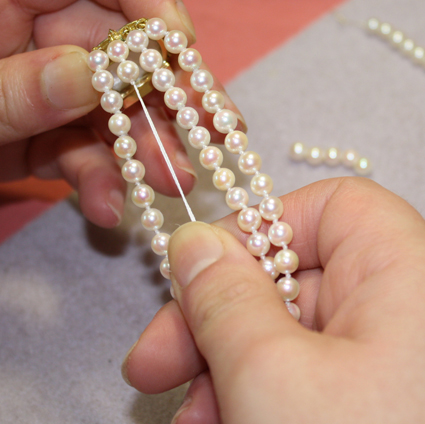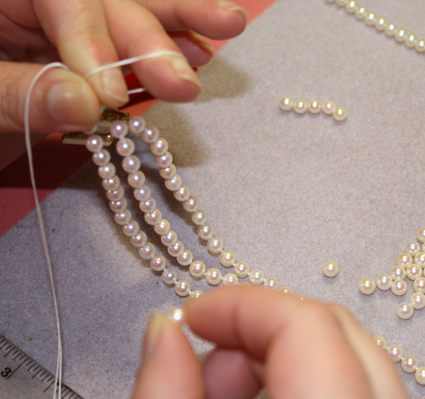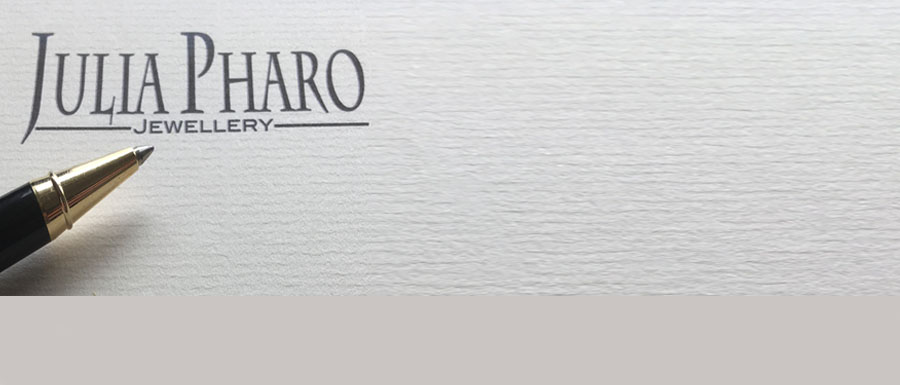 There’s no denying the elegance of a classic pearl rope, now enjoying a welcome renaissance thanks to the popularity of movies and television shows such as The Great Gatsby, Downton Abbey and Mr. Selfridge.
There’s no denying the elegance of a classic pearl rope, now enjoying a welcome renaissance thanks to the popularity of movies and television shows such as The Great Gatsby, Downton Abbey and Mr. Selfridge.
These incredibly versatile necklaces can be worn in so many ways and, as such, are often a “go to” piece in many of my clients’ jewellery wardrobes.
To make sure your pearl rope remains in tip top condition, it’s a good idea to thoroughly inspect your necklace every year to check for signs of wear to the thread that could spell disaster at a later date.
Here are two early warning signs that your pearl strand could use a little TLC by receiving a re-string.
• Fraying or stretching of the thread at the clasp.
If your pearl necklace features a clasp, this is usually the primary point of wear for the jewellers’ silk used to string your pearls. Stretching and fraying of the silk can occur around the clasp for many reasons. It’s the point which receives most tension when putting on and removing the necklace. Natural grease and oils from the fingers can also cause deterioration of the silk from handling the clasp.
• Stretched or frayed thread between each knot in your necklace.
Hopefully the thread used to string your pearl necklace is knotted between each pearl to prevent the total disaster of loosing every pearl should the jewellers’ silk break (if your necklace isn’t knotted, please get your necklace re-strung correctly as soon as possible!). However, over time, the silk can stretch leaving an unsightly long string between each knot, with each pearl rattling up and down on its stretched section of thread, risking fraying of the thread and damage to the pearls as they knock harshly against one another. Thread stretching is particularly common in necklaces of opera length 36″) or flapper/rope length (50″ to 70″) – especially if the pearls are heavy. This stretching of the thread is simply caused by gravity and stretched silk on a necklace should be replaced as soon as it becomes evident to prevent eventual breakage.
Whilst there are lots of different techniques to string pearls (including some amazing looking gizmos to help you knot each pearl) traditional hand stringing and knotting is an art that is seldom widely taught – usually being passed on from one artisan to their apprentice.

I was very fortunate to have learned how to correctly string pearls and have had the privilege to re-string some truly beautiful necklaces for many of my clients.
No detail of the re-string is overlooked during my work on your necklace – from choosing the correct grade of jewellers’ silk most appropriate to the size of pearl and total weight of the strand; through to secure finishing of the piece by working silk back through a number of the pearls (not simply tying the thread off at the end!).
Necklaces are strung only with the finest French silks and can be traditional off-white in colour or dyed to blend with the colour of your pearls to make the knotting entirely unobtrusive.
Re-stringing is a very inexpensive way to give your necklace an entirely new lease of life.
Whilst we don’t offer re-stringing to the general public, as a service exclusively available to our existing clients, if you have a pearl rope that has seen better days, please do get in touch to discuss professional re-stringing.



